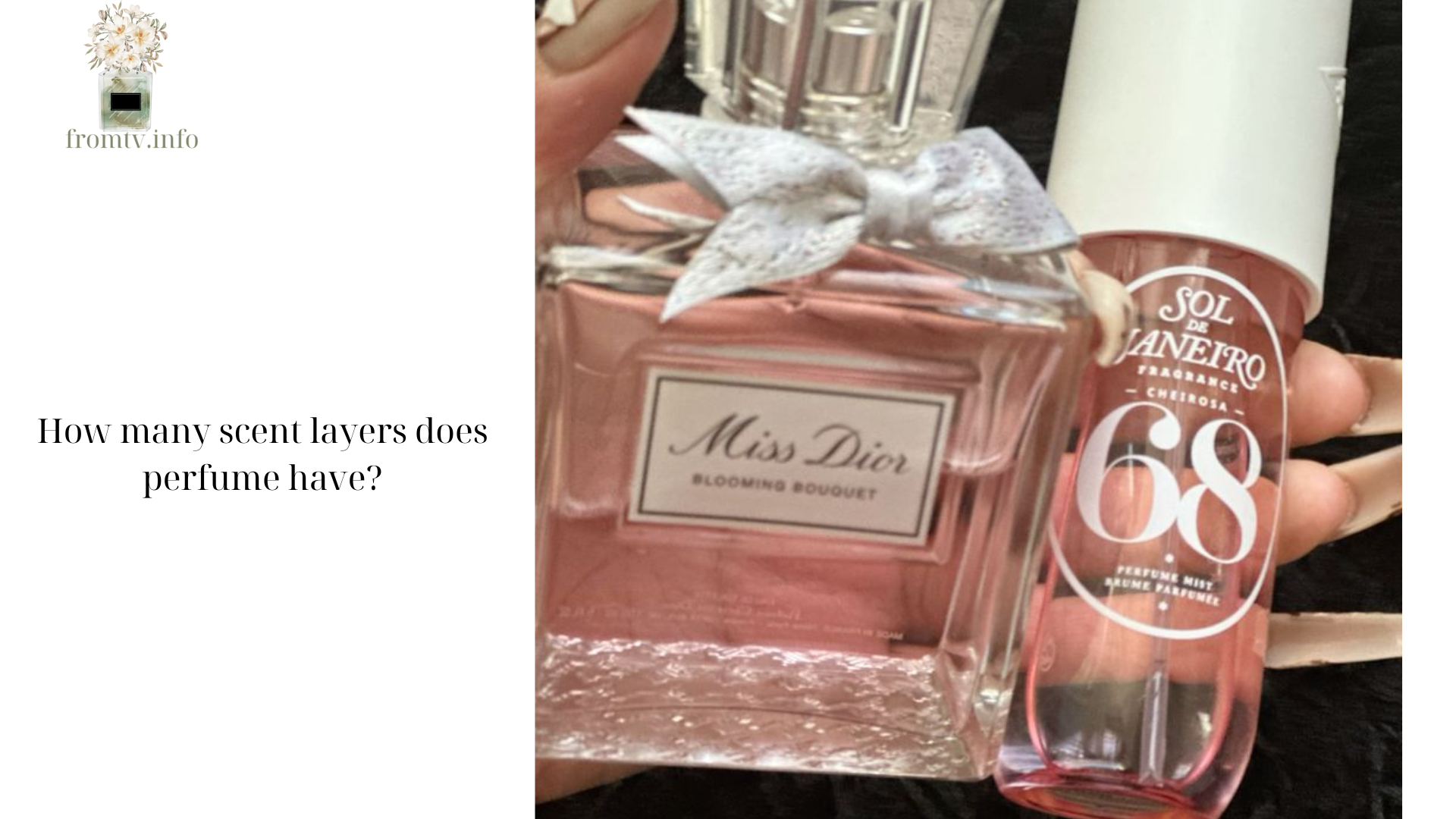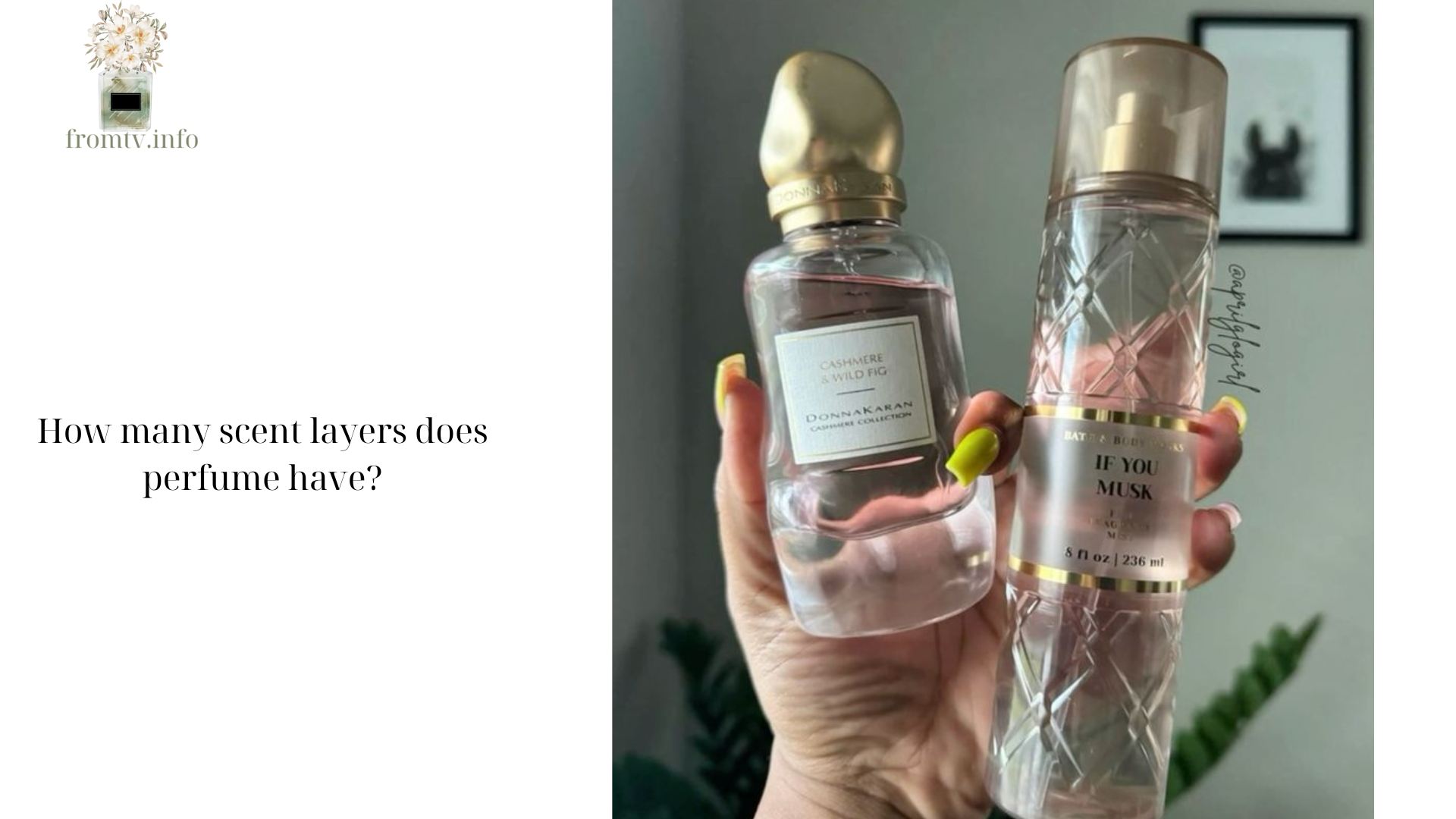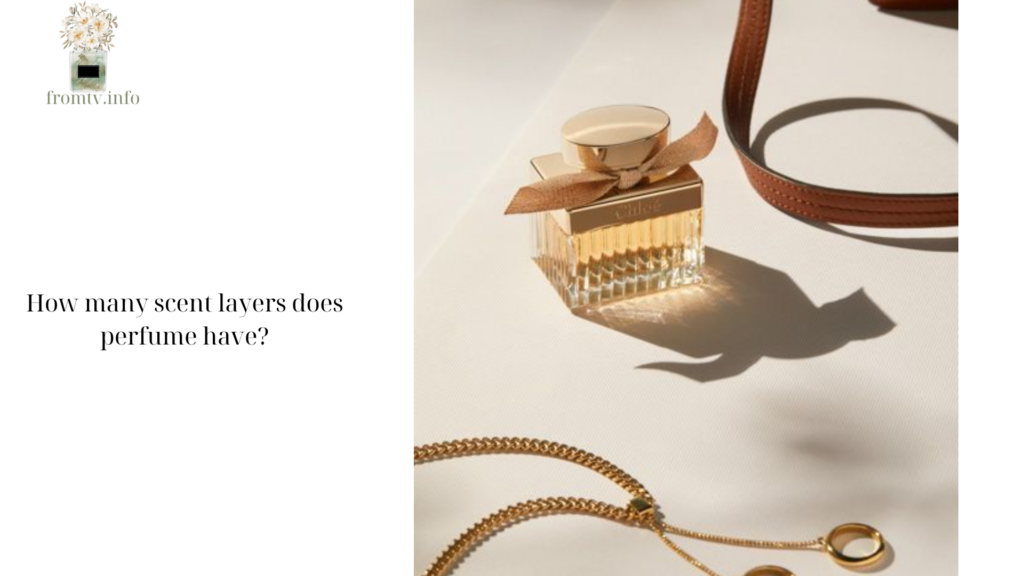Perfume is a complex and captivating art form, designed to evoke emotions, memories, and a sense of identity. One of the most fascinating aspects of perfume is its multi-layered structure, which unfolds over time to reveal a full spectrum of scents. These layers are commonly referred to as top notes, middle notes, and base notes. In this article, Fromtv will delve into the intricacies of these perfume layers, explaining their roles, how they interact, and why understanding them is key to appreciating and choosing the right fragrance.
How many scent layers does perfume have?

Perfume is composed of various ingredients, including natural and synthetic oils, alcohol, and water. These ingredients are blended in specific proportions to create a harmonious and evolving scent profile. The structure of a perfume is often described using the metaphor of a pyramid, with each layer representing a different stage of the fragrance’s lifecycle:
- Top Notes
- Middle Notes
- Base Notes
Top Notes
Top notes are the initial scents you perceive when you first apply a perfume. They form the first impression and are often light, fresh, and volatile. These notes evaporate quickly, usually within the first 15 minutes to an hour, but they are crucial in capturing your interest.
Characteristics of Top Notes:
- Fresh and Bright: Common top notes include citrus (lemon, bergamot), light fruits (apple, pear), and aromatic herbs (lavender, basil).
- Volatile: These notes are designed to evaporate quickly, providing an immediate but fleeting scent.
- First Impression: They set the tone for the fragrance, enticing the wearer and those around them.
Examples of Top Notes:
- Citrus: Lemon, lime, bergamot, grapefruit
- Fruits: Apple, pear, raspberry
- Herbs: Lavender, basil, mint
Middle Notes
Middle notes, also known as heart notes, emerge once the top notes dissipate. They form the core of the fragrance and define its main character. Middle notes typically last longer than top notes, enduring for several hours.
Characteristics of Middle Notes:
- Balanced and Harmonious: These notes are more rounded and fuller, often incorporating floral, fruity, and spicy elements.
- Bridge: They act as a bridge between the fleeting top notes and the long-lasting base notes.
- Personality: Middle notes give the perfume its distinctive personality and depth.
Examples of Middle Notes:
- Floral: Rose, jasmine, lily, geranium
- Fruity: Peach, apricot, blackcurrant
- Spices: Cinnamon, nutmeg, clove
Base Notes

Base notes are the foundation of a perfume, providing depth, longevity, and a lasting impression. These notes develop slowly and can be detected long after the perfume has been applied, often lingering for hours or even days.
Characteristics of Base Notes:
- Rich and Deep: Base notes are typically heavier and more complex, including woods, resins, and musks.
- Longevity: They are responsible for the lasting power of the fragrance, ensuring it remains detectable over time.
- Anchor: These notes anchor the perfume, adding warmth and fullness.
Examples of Base Notes:
- Woods: Sandalwood, cedarwood, patchouli
- Resins: Amber, frankincense, myrrh
- Musk: White musk, animalic musk, synthetic musk
The Evolution of a Perfume
Understanding the layered structure of a perfume helps in appreciating its complexity and evolution. When you first apply a perfume, the top notes are immediately apparent, offering a fresh burst of scent. As these notes fade, the middle notes start to emerge, revealing the true character of the fragrance. Finally, as the middle notes dissipate, the base notes come to the forefront, providing a lasting and memorable finish.
The Importance of Each Layer
Each layer of a perfume plays a crucial role in the overall experience:
- Top Notes: These capture immediate attention and create the first impression.
- Middle Notes: These develop the heart of the fragrance, adding complexity and richness.
- Base Notes: These ensure longevity and depth, leaving a lasting impression.
Choosing the Right Perfume
When selecting a perfume, it’s essential to consider how it will evolve over time. A fragrance that appeals to you initially might change as the top notes fade and the middle and base notes emerge. Therefore, it’s advisable to test a perfume on your skin and allow it to develop fully before making a decision.
Tips for Choosing a Perfume:
- Test on Skin: Perfumes react differently with individual body chemistry. Apply it to your skin and wait for at least an hour to experience all the layers.
- Consider the Occasion: Different scents suit different occasions. Light and fresh perfumes are ideal for daytime wear, while richer, deeper scents are better for evening events.
- Seasonal Variations: Some fragrances are better suited for specific seasons. Fresh, citrusy perfumes are great for summer, while warm, spicy scents are perfect for winter.
Conclusion

The layered structure of perfume, with its top, middle, and base notes, is a testament to the artistry and complexity of fragrance creation. Each layer plays a vital role in the overall experience, from the initial burst of top notes to the lasting impression of the base notes. Understanding these layers not only enhances your appreciation of perfume but also helps you make more informed choices when selecting a fragrance.
Whether you’re drawn to the fresh and fleeting top notes, the rich and evolving middle notes, or the deep and lasting base notes, recognizing the nuances of each layer allows you to fully enjoy the journey of a perfume as it unfolds on your skin. So, the next time you explore a new fragrance, take a moment to savor each stage and discover the intricate beauty of its composition

